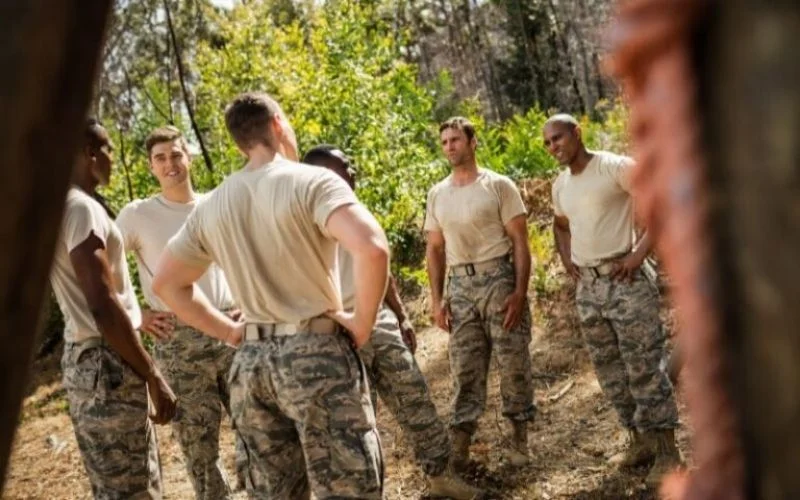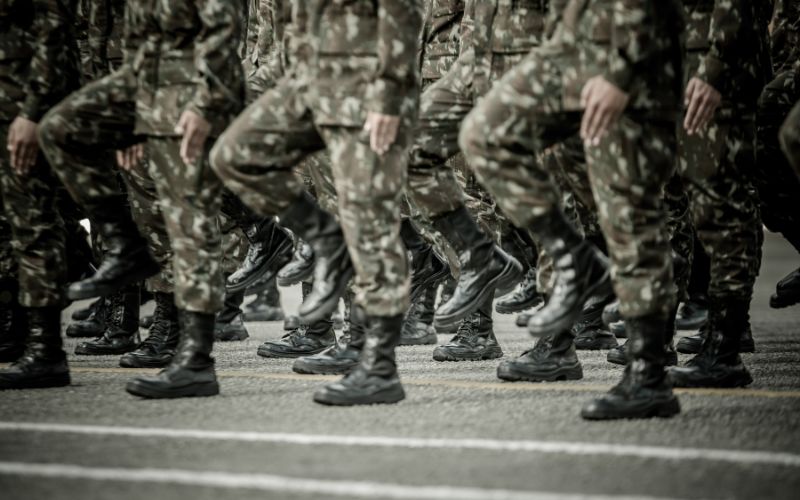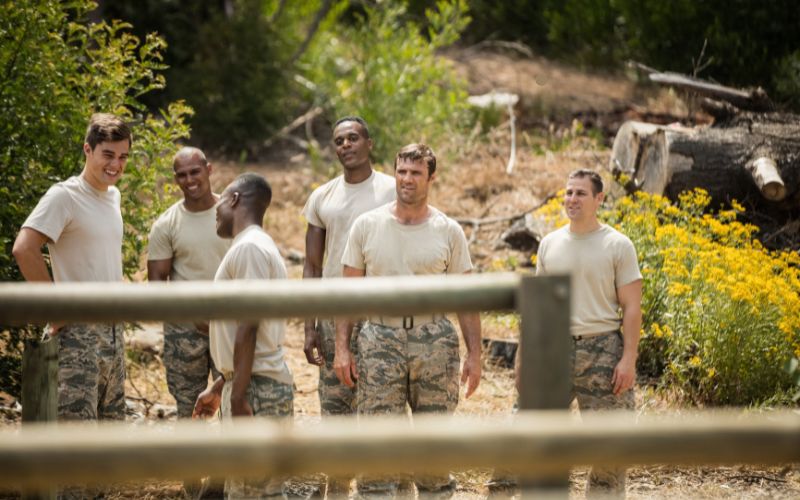OD Green vs. Other Military Colors: A Comprehensive Guide

When you think of military uniforms and equipment, one of the first images that comes to mind is likely a drab, greenish hue. This color, OD green or Olive Drab green, is iconic in military history and culture. But OD green is just one of many colors used by military forces worldwide. In this blog, we’ll explore the significance of OD green, compare it with other military colors, and delve into why certain hues are chosen for specific environments and purposes. We’ll also touch on the broad green color history, examining how green has been used in various contexts beyond the military and why it remains a powerful and versatile color choice throughout history.
The Origins And Evolution Of OD Green

OD green, short for Olive Drab green, is a color that has become synonymous with military uniforms and equipment. Its origins date back to World War I, when it was developed to provide soldiers with better camouflage on the battlefield. Over time, OD green evolved in response to changing warfare environments, adapting its shade and application to suit different terrains and technological advancements. Today, it remains a key color in military gear, valued for effectively blending into natural surroundings.
The Birth Of OD Green
OD green, short for Olive Drab green, first gained prominence during World War I and became a standard color in military uniforms and equipment. Its earthy, muted tone was ideal for blending into the natural environments of Europe’s battlefields. The color provided a practical advantage by making soldiers less visible to the enemy, especially in forested and rural areas. As warfare evolved, so did the color, adapting to various terrains and operational needs.
Why OD Green?
The primary reason for the widespread use of OD green in the military is its versatility in various environments. The color works well in temperate zones where foliage and vegetation dominate the landscape. It doesn’t stand out sharply against nature’s greens, browns, and grays, making it an excellent camouflage option. Additionally, the drab nature of the color means it reflects very little light, which is crucial in avoiding detection.
Evolution And Variants
OD green has seen several variants over the decades, with slight adjustments to the shade to suit different environments and technological advancements. For instance, in World War II, the U.S. military used a slightly different hue, OD No. 7, darker and more suited to the varied terrains of the war’s global theaters. Post-war, the color continued to evolve, with different military branches adopting variations tailored to specific needs.
Comparing OD Green To Other Military Colors

While OD green is a staple in military color schemes, it’s far from the only color used in military uniforms and equipment. Here’s a look at how it stacks up against other popular military colors:
Coyote Brown
Coyote brown is another widely used military color, especially in modern U.S. military uniforms. Unlike OD green, which is suited for wooded and vegetative environments, coyote brown is designed for arid and desert regions. The color blends well with the sandy, rocky, and sparse vegetation in desert environments, making it an excellent choice for Middle Eastern deployments.
Coyote brown also works well in urban environments where the color palette tends to be dominated by concrete and earth tones. The U.S. Marine Corps, for example, has incorporated coyote brown into their uniforms as part of the Marine Corps Combat Utility Uniform (MCCUU).
Desert Tan
Desert tan, also known as khaki or sand color, is another color designed for arid environments. This color became particularly prominent during the Gulf War when U.S. forces used it extensively. Desert tan is lighter than coyote brown and optimized for deserts’ bright, sun-bleached landscapes.
Due to the light-colored sands and rocky terrain, this color is effective in environments with minimal vegetation and high visibility. Like OD green, desert tan has seen various iterations and shades, but its purpose remains: to provide effective camouflage in desert conditions. In conjunction with tactical tools, desert tan enhances operational effectiveness by blending with the environment, providing protection and strategic advantage in arid and desert combat scenarios.
Foliage Green
Foliage Green is a versatile camouflage color in the military, best suited for different environments such as forests, cities, and jungles. Its neutral green-gray combination perfectly conceals soldiers in natural and man-made environments. Unlike traditional military colors designed for particular terrains, Foliage Green’s versatility makes it ideal for special operations forces, guaranteeing utility in different tactical missions and cementing its position as an all-rounder camouflage.
Multicam
Multicam is a color and pattern incorporating multiple shades, including greens, browns, and tans, to create a versatile camouflage. Developed by Crye Precision, Multicam has been widely adopted by U.S. and allied forces for its effectiveness across different environments.
Multicam’s advantage lies in its adaptability. While OD green is specific to wooded and temperate environments, and coyote brown or desert tan are optimized for desert regions, Multicam is designed to work across various environments, from deserts to forests to urban areas. This versatility makes it popular for units operating in various terrains within a single mission or deployment.
Flecktarn
Flecktarn is a camouflage pattern used by the German military that incorporates several colors, including shades of green, brown, and black. Unlike the solid color of OD green, Flecktarn’s pattern is designed to break up a soldier’s silhouette, making it harder to detect at a distance.
Flecktarn is particularly effective in European environments, often a mix of forest, grassland, and urban settings. The multiple colors in the pattern work together to provide a level of camouflage that OD green alone cannot achieve. However, Flecktarn’s effectiveness is largely tied to the specific environments it was designed for and may need to perform better in the desert or arctic regions.
Digital Camouflage
Digital camouflage, or digicam, is a modern approach to military camouflage using pixelated patterns rather than the organic shapes seen in older camo patterns. The idea behind digital camouflage is to create a pattern that disrupts the eye’s ability to detect and focus on a soldier’s outline.
Digital camouflage can be created in various color schemes to suit different environments. For example, the U.S. Army’s Universal Camouflage Pattern (UCP) uses a mix of gray, green, and tan pixels to provide camouflage across various environments. However, UCP has been criticized for its ineffectiveness in many settings, leading to the adoption of Multicam in recent years.
Why The Color Choice Matters
The choice of color in military equipment and uniforms is not just about aesthetics; it’s about survival. The right color can mean the difference between staying hidden or being detected by the enemy. Here’s why these colors are so crucial:
Camouflage and Concealment
The primary reason for choosing colors like OD green or coyote brown is to blend in with the surrounding environment. In warfare, remaining unseen can provide a significant tactical advantage. Whether it’s hiding from enemy forces or avoiding detection by aerial surveillance, the right camouflage is critical.
Psychological Impact
Colors can also psychologically impact both the wearer and the observer. For soldiers, wearing a uniform that blends into their environment can boost confidence and a sense of security. For the enemy, encountering a well-camouflaged force can be disorienting and demoralizing.
Versatility and Adaptability
As military operations often occur in diverse environments, camouflage’s versatility is crucial. Colors like OD green are great for forests, but the need for different colors became apparent as military engagements moved to deserts and urban environments. This adaptability is why modern militaries often use multiple colors and patterns, such as Multicam, which can provide effective camouflage across various terrains.
The Future Of Military Colors
As technology and warfare evolve, so will the colors and patterns used by military forces. Advances in materials science, digital camouflage, and adaptive camouflage technology will likely play a significant role in future military uniforms. These innovations could include uniforms and tactical gear that change color based on the environment or patterns that can adapt in real-time to provide optimal camouflage.
Conclusion
OD green has played a pivotal role in military history and remains a symbol of military might and stealth. However, it’s just one of many colors developed to meet the changing needs of warfare. From the sands of the desert to the forests of Europe, each color and pattern serves a specific purpose, providing soldiers with the best possible chance of staying hidden and safe in combat.
Understanding the role of these colors helps us appreciate the complexities of military operations and the ongoing efforts to adapt to new challenges. Whether through the muted tones of OD green or the adaptable patterns of Multicam, military colors will continue to evolve, ensuring that soldiers remain one step ahead in the ever-changing landscapes of modern warfare.
Frequently Asked Questions
Why Is OD Green Used In The Military?
OD green is used because it is versatile and blends into various natural environments, particularly those with foliage. It also reflects very little light, making it ideal for remaining undetected.
How Does OD Green Compare To Other Military Colors?
OD green is best suited for temperate and forested areas, while other colors like coyote brown and desert tan are designed for arid environments. Multicam and digital camo offer more versatility across different terrains.
Has OD Green Changed Over Time?
Yes, OD Green has seen various iterations and slight changes in shade over the years, and it is better suited to the evolving needs of military operations across different regions.
What is the difference in camouflage between Ranger Green and Foliage Green?
Ranger Green is bright and provides a slight contrast to Foliage Green. Although Foliage Green is more neutral and versatile in different environments, Ranger Green delivers a more energetic appearance in forests and open terrains. Both are good, but the decision will be based on the exact operational requirements and environment. Others can favor Ranger Green for its versatility, while others can opt for Foliage Green due to its subdued hue.
Are fashion designers allowed to use military colors such as Ranger Green?
Yes, Ranger Green and Foliage Green are trendier fashion phenomena. These colors are easily found in jackets, fabric accents, and other clothing for anyone interested in adding military style to their wardrobe. These colors provide a utilitarian, earthy look that can easily be combined with tactical or casual attire.
